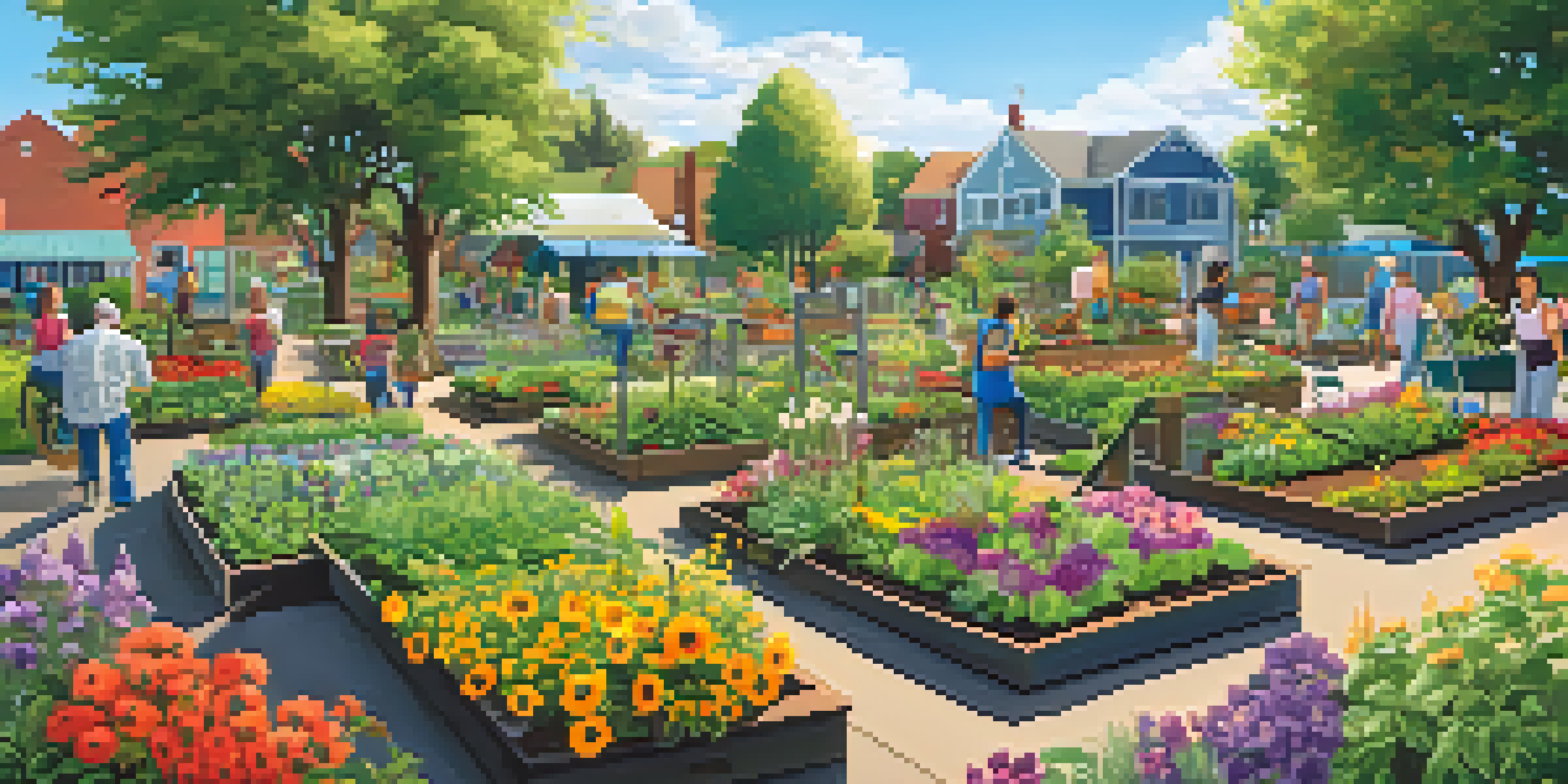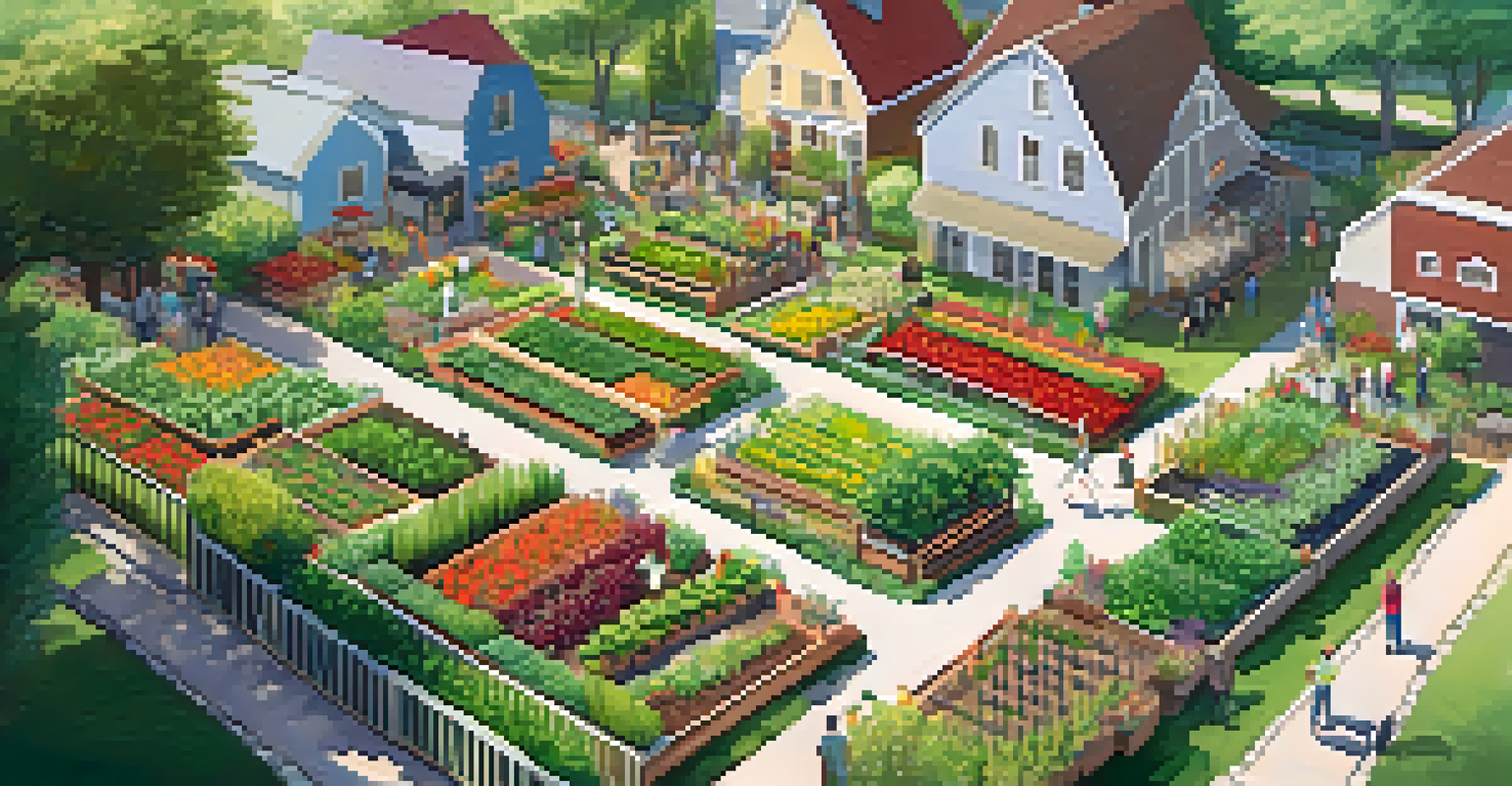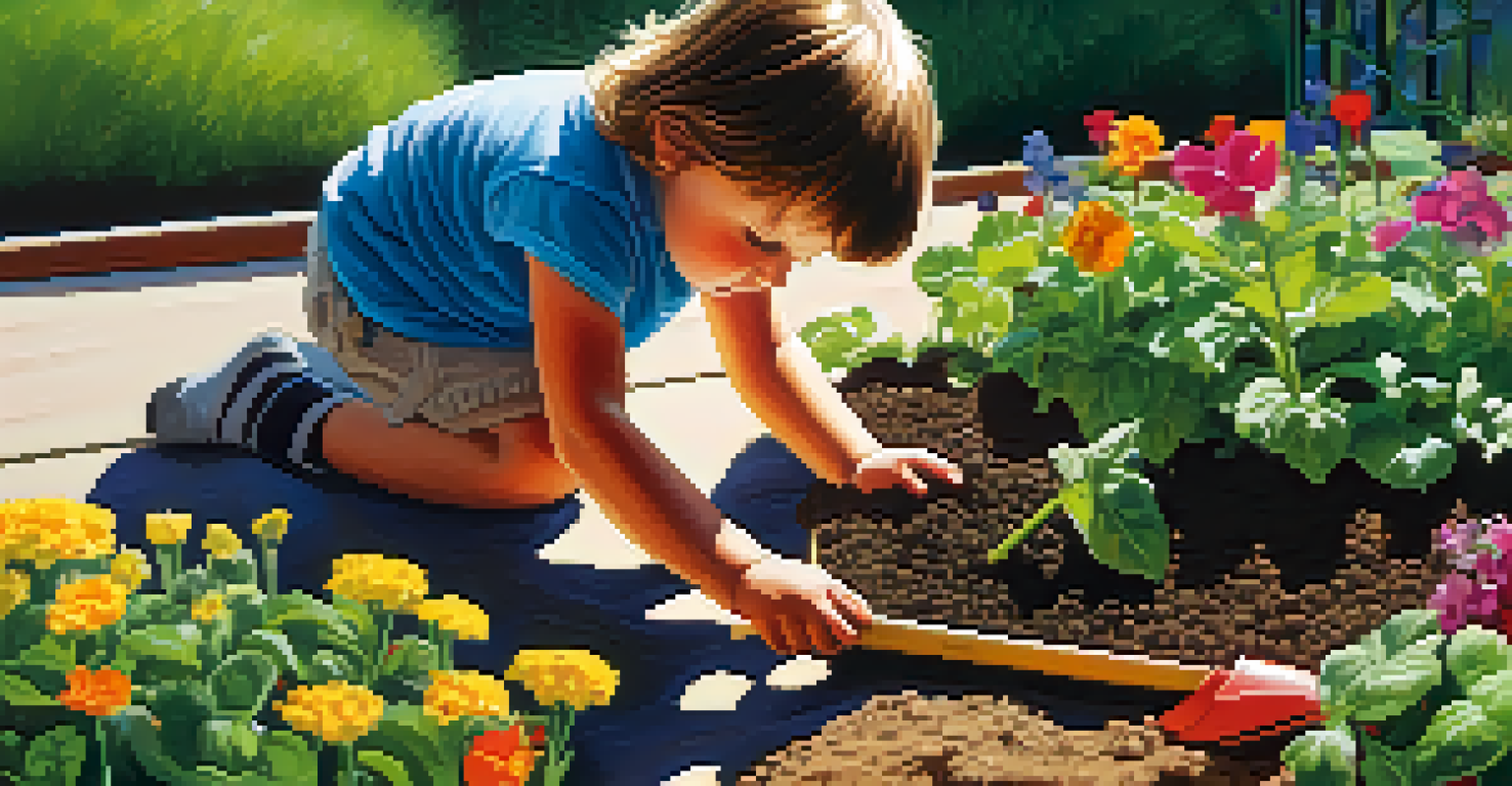How to Start Your Own Community Garden in Your Neighborhood

Understanding the Benefits of a Community Garden
Community gardens offer a wealth of benefits that go beyond just growing food. They create a space for neighbors to connect, fostering friendships and a sense of belonging. Additionally, these gardens can beautify an area, turning vacant lots into vibrant green spaces.
The love of gardening is a seed once sown that never dies.
Beyond social benefits, community gardens promote sustainability. By growing your own fruits and vegetables, you reduce your carbon footprint and encourage biodiversity. It's a small step that can lead to significant environmental impact.
Moreover, they serve as educational hubs where people of all ages can learn about gardening, healthy eating, and environmental stewardship. Imagine children learning where their food comes from or seniors sharing their gardening wisdom!
Gathering Support from Your Community
Starting a community garden requires a team effort, so reaching out to your neighbors is essential. Host an informal meeting in a local park or community center to discuss the idea, and invite input from everyone. This openness will help generate enthusiasm and commitment.

You might be surprised by how many people are interested in gardening! Share your vision and outline the potential benefits to get others on board. Collecting ideas and suggestions can also spark creativity and ensure the garden meets the community's needs.
Community Gardens Foster Connections
They create a space for neighbors to connect, fostering friendships and a sense of belonging.
Once you have a solid group of interested participants, establish a core team to help lead the project. This team can help with organizing meetings, planning, and fundraising efforts, making it easier to tackle tasks together.
Finding the Right Location for Your Garden
Choosing the right location is crucial for the success of your community garden. Look for a space that receives plenty of sunlight, has access to water, and is within walking distance for most community members. A vacant lot or park can be ideal, but make sure to check local regulations.
Community is much more than belonging to something; it’s about doing something together that makes belonging matter.
It’s also important to consider the soil quality of your chosen site. If the soil is contaminated or rocky, you might need to invest in raised beds or soil amendments. Conducting a soil test can provide valuable information about what you’re working with.
Once you’ve found a suitable spot, secure permission from the property owner or local government. Establishing a formal agreement can help prevent misunderstandings down the line and ensure long-term access to the land.
Designing Your Community Garden Layout
Designing the layout of your community garden is an exciting step that allows for creativity and practicality. Consider the needs of all gardeners: raised beds, pathways, and communal spaces for gatherings should all be included. Sketching a plan can help visualize what the garden will look like.
Be mindful of the types of plants you want to grow and their space requirements. Companion planting—growing different plants together for mutual benefits—can maximize your garden’s productivity. For example, tomatoes and basil thrive together and can enhance each other's flavors.
Sustainability Through Local Gardening
Growing your own food reduces your carbon footprint and encourages biodiversity.
Incorporating elements like benches, compost bins, and tool storage can also improve the garden's functionality. A well-thought-out design will not only make gardening easier but also create a welcoming atmosphere for everyone involved.
Organizing Resources and Materials
To bring your community garden to life, you’ll need to gather resources and materials. This may include soil, seeds, tools, and other gardening supplies. Consider hosting a supply drive or reaching out to local businesses for donations.
Crowdfunding platforms can also be a great way to raise money for initial costs. Alternatively, organizing community events like bake sales or potlucks can generate funds while building camaraderie among participants.
Don't forget to tap into local gardening groups or extension services for advice and potential partnerships. They may offer valuable resources or expertise to help ensure your garden's success.
Establishing Rules and Responsibilities
Setting clear rules and responsibilities is essential for the smooth operation of your community garden. This includes guidelines on planting, maintenance, and harvesting schedules. Having a shared understanding helps prevent conflicts and keeps everyone on the same page.
Consider creating a community garden agreement that outlines each member's responsibilities. This could include tasks like watering, weeding, and cleaning communal areas. Regular meetings can help ensure everyone is contributing and feeling involved.
Celebrate Success with the Community
Organizing events like harvest festivals strengthens community bonds and encourages ongoing participation.
By fostering a sense of ownership and accountability, your garden can thrive as a collaborative effort. When everyone knows their role, it creates a harmonious environment for all participants.
Celebrating Your Garden's Success and Community
A community garden is a living testament to hard work and collaboration, so don’t forget to celebrate your achievements! Organizing seasonal harvest festivals or potluck gatherings can be a wonderful way to bring everyone together and share the fruits of your labor.
These celebrations not only strengthen community bonds but also encourage participation in the garden’s ongoing maintenance. Sharing recipes or ideas for using the produce can inspire others to get involved and appreciate the work that goes into gardening.

Additionally, documenting your garden's progress through photos or a blog can inspire others in your community and beyond. It’s a great way to showcase the beauty and benefits of community gardening while encouraging others to start their own initiatives.